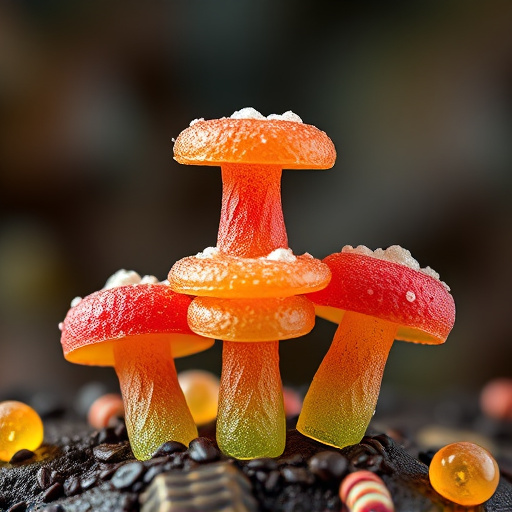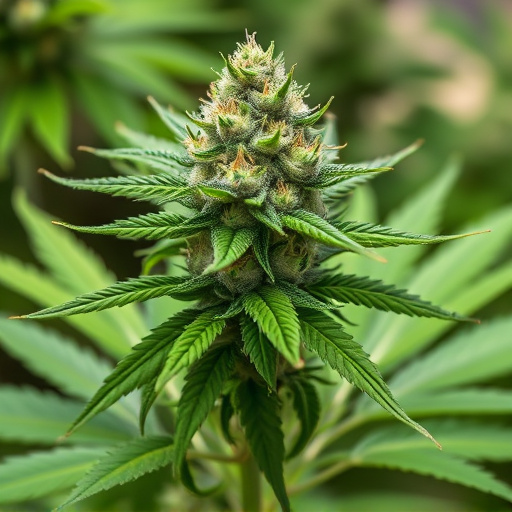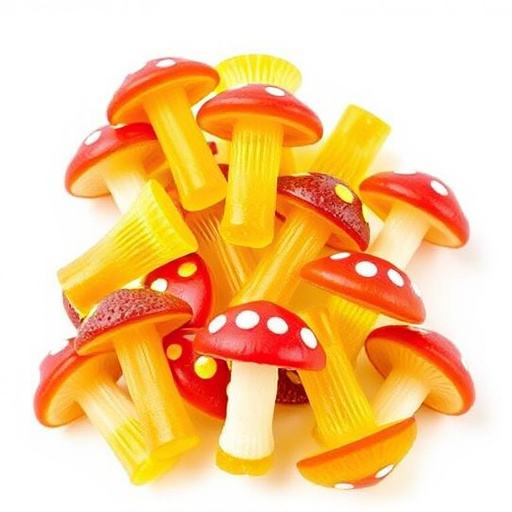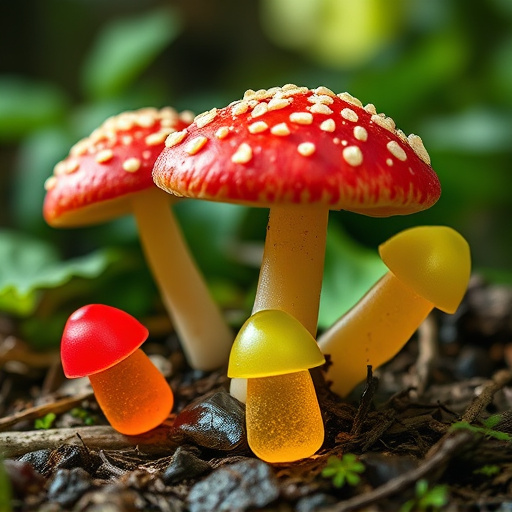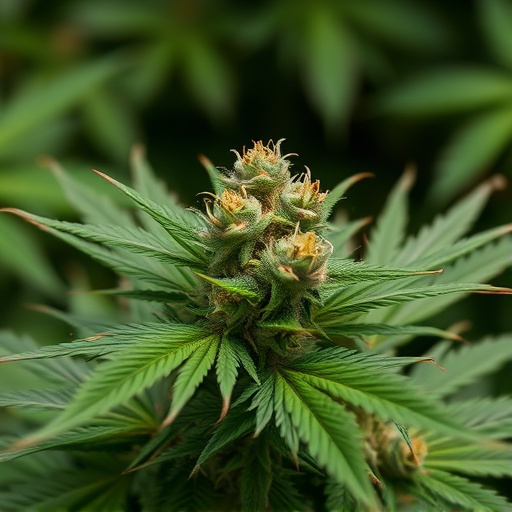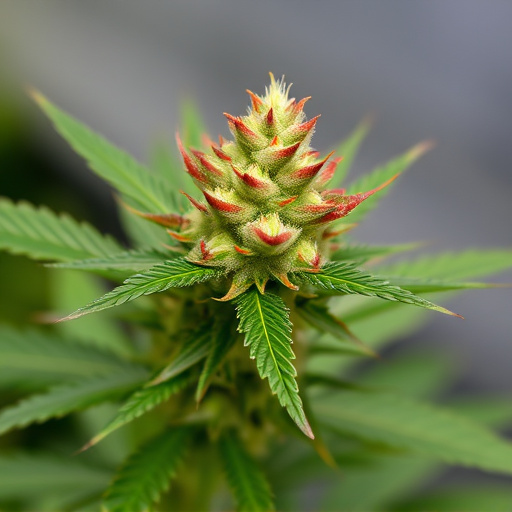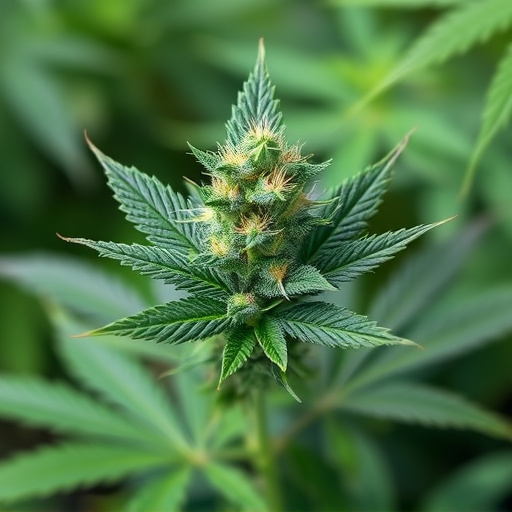The diverse chemical profiles of cannabis flowers, characterized by varying cannabinoids (like THC, CBD) and terpenes (like myrcene, limonene, linalool), result in unique effects. Indica strains typically induce relaxation and sleep, while Sativa breeds stimulate creativity and energy. Identifying the best strains for medical benefits like pain relief, anxiety reduction, or appetite improvement is crucial. Research highlights specific strains with targeted effects, e.g., Blue Dream for stimulation and calmness, Lavender for relaxation and better sleep. Healthcare professionals guide patients to suitable options based on conditions, with Indica aiding insomnia and anxiety, Sativa helping depression and PTSD, and hybrids managing nausea and neuropathic pain. Popular medical cannabis strains like Blue Dream, Charlotte's Web, and Granddaddy Purple are known for their efficacy in treating various symptoms. Understanding individual differences in response, influenced by genetics and personal factors, is vital for navigating the potential benefits of cannabis.
Cannabis flowers offer a myriad of effects, varying greatly from person to person. Understanding these complexities is key to harnessing the therapeutic potential of medical cannabis. This article explores different ways cannabis can impact individuals, focusing on specific conditions and highlighting the significance of personal responses. We uncover the best strains of medical cannabis known for their beneficial properties in treating various ailments, providing insights into tailored treatment options.
- Understanding Cannabis Flowers and Their Effects
- Best Strains of Medical Cannabis for Specific Conditions
- Individual Differences in Cannabis Response
Understanding Cannabis Flowers and Their Effects
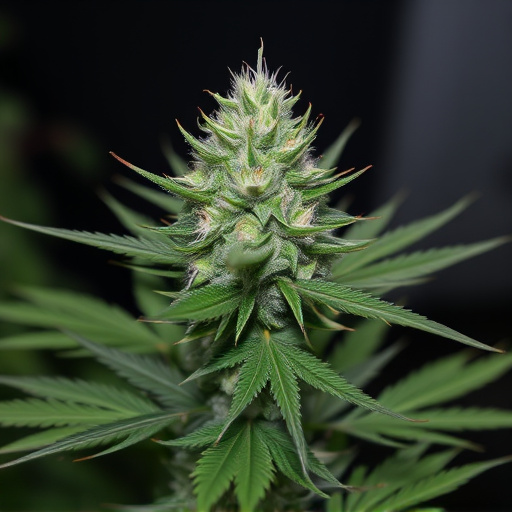
Cannabis flowers, known for their diverse chemical profiles, offer a wide range of effects that vary from person to person. These variations stem from the different cannabinoids and terpenes present in each strain. For instance, Indica strains often promote relaxation and sleep due to high levels of THC and myrcene terpenes, while Sativa varieties tend to evoke creativity and energy with higher concentrations of CBD and limonene.
Identifying the best strains of medical cannabis for individual needs is essential. Many patients seek specific flowers for their therapeutic benefits, such as relieving pain, reducing anxiety, or improving appetite. Research suggests that certain strains may offer more targeted effects. For example, Blue Dream is renowned for its potent THC content and fruity aroma, providing a stimulating yet calming experience, while Lavender’s high levels of linalool terpenes are known to promote relaxation and improve sleep quality. Understanding these variations empowers consumers to make informed decisions when selecting cannabis flowers that best align with their desired effects.
Best Strains of Medical Cannabis for Specific Conditions
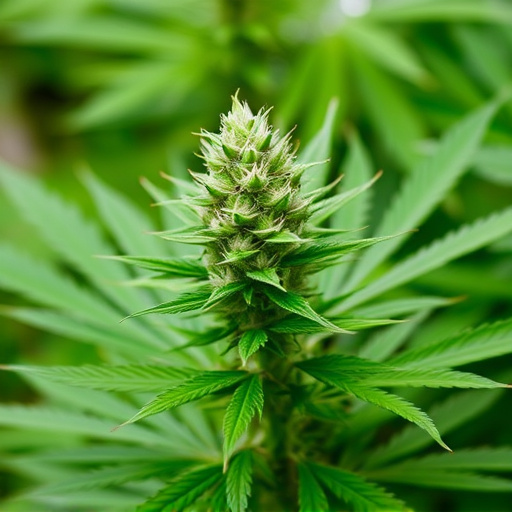
When it comes to finding the best strains of medical cannabis for specific conditions, the variety of options can be overwhelming. However, research and guidance from healthcare professionals are key to making an informed decision. For example, Indica strains are often recommended for their sedating effects, which can help with insomnia, anxiety, and chronic pain. Sativa strains, on the other hand, tend to have a more uplifting and energizing effect, making them suitable for conditions like depression, multiple sclerosis (MS), and post-traumatic stress disorder (PTSD).
Hybrid strains combine traits from both Indica and Sativa, offering a balanced profile that can be beneficial for a wide range of symptoms. These may include nausea, appetite loss, and neuropathic pain. Some popular medical cannabis strains known for their effectiveness include Blue Dream, known for its high THC content and stimulating effects; Charlotte’s Web, celebrated for its low THC and high CBD ratio, making it ideal for treating seizures and anxiety; and Granddaddy Purple, renowned for its relaxing properties and potential benefits for insomnia and chronic pain.
Individual Differences in Cannabis Response
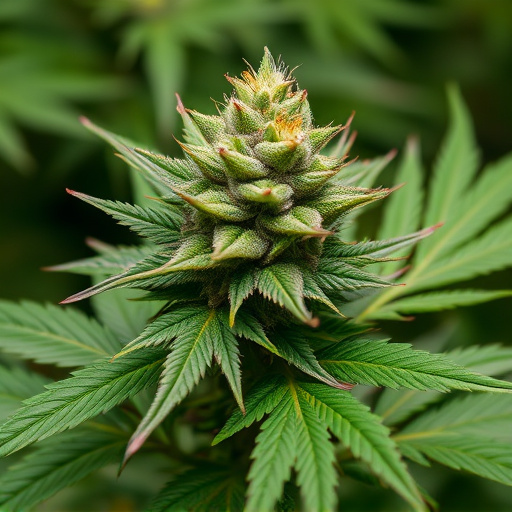
Cannabis flowers, with their diverse chemical profiles, can evoke vastly different responses in individuals due to several factors. While scientific research continues to unravel the complexities, it’s clear that genetics play a significant role in determining how one might react to cannabis. This includes differences in endocannabinoid system sensitivity and individual variations in the production of enzymes that metabolize cannabinoids like THC and CBD.
Moreover, personal experiences with cannabis can be shaped by lifestyle choices, mental health status, and environmental factors. Some individuals may find certain best strains of medical cannabis more effective for specific conditions or preferences due to their unique chemical compositions, such as higher levels of CBD, THC, or terpene profiles. Exploring these individual differences is crucial in navigating the potential benefits of cannabis while ensuring a safe and enjoyable experience for each user.
When it comes to cannabis flower, its effects vary widely from person to person. Understanding these individual differences is crucial in navigating the world of medical cannabis. By knowing your unique response and selecting the appropriate strain, such as one from our discussion on the best strains of medical cannabis for specific conditions, you can harness the plant’s potential while mitigating any adverse reactions. Remember that what works for one person might not work for another, so taking a personalized approach to cannabis therapy is essential.
